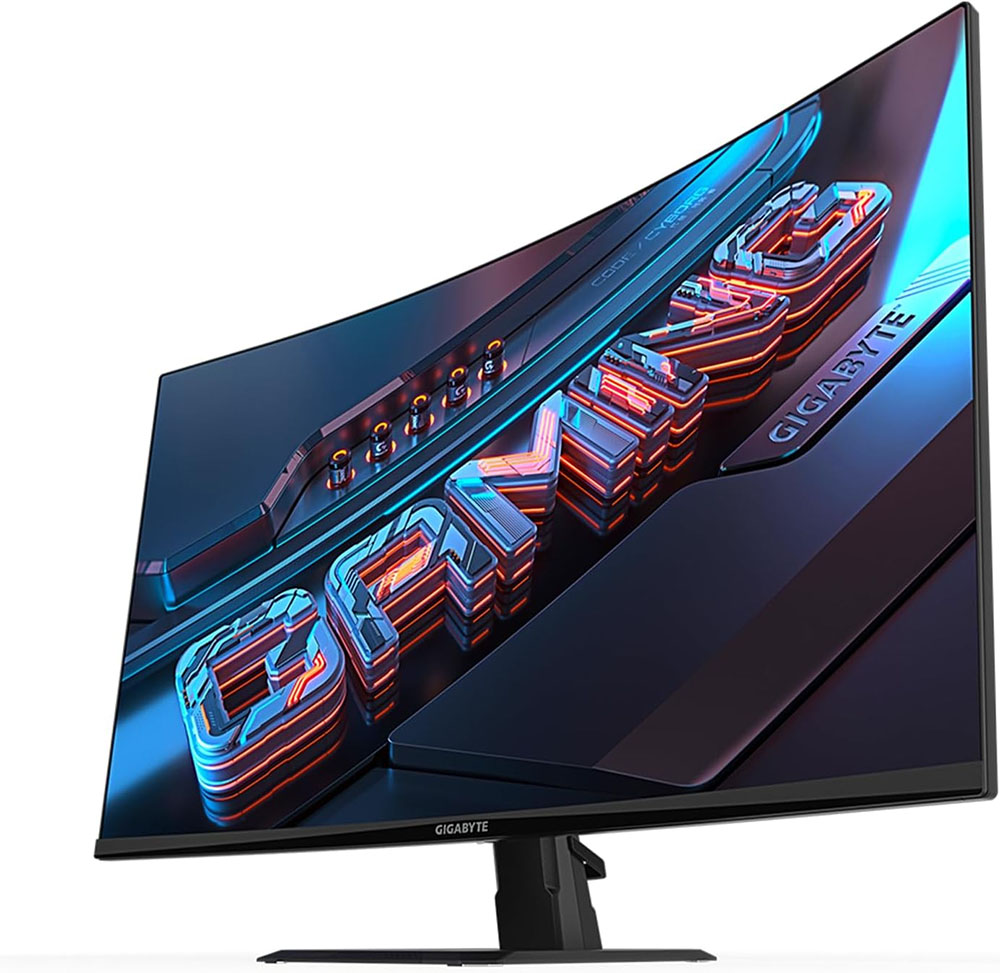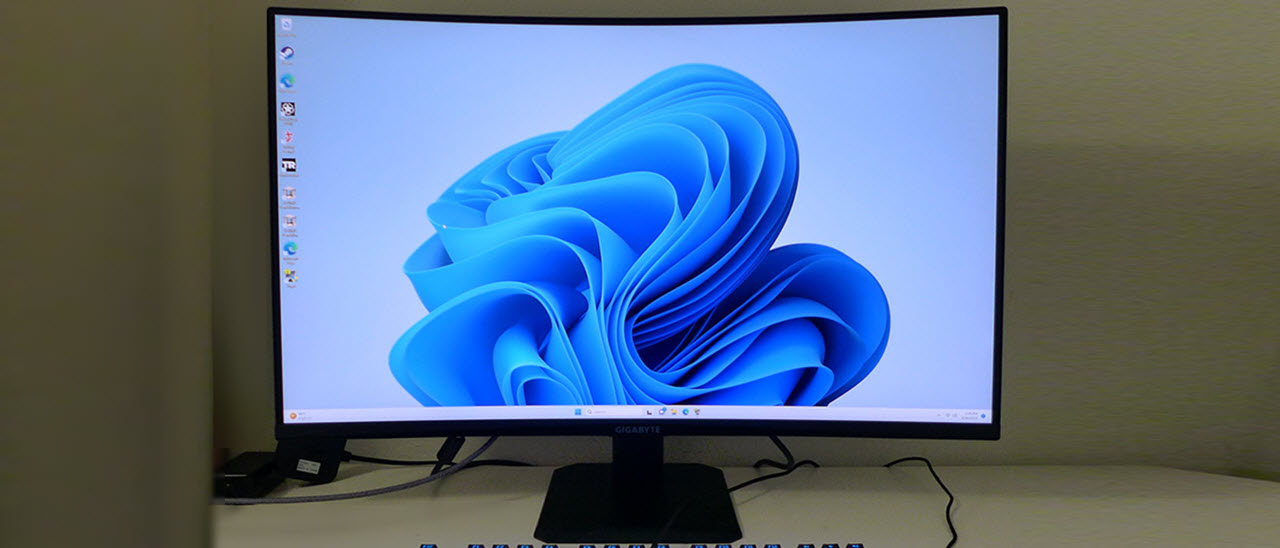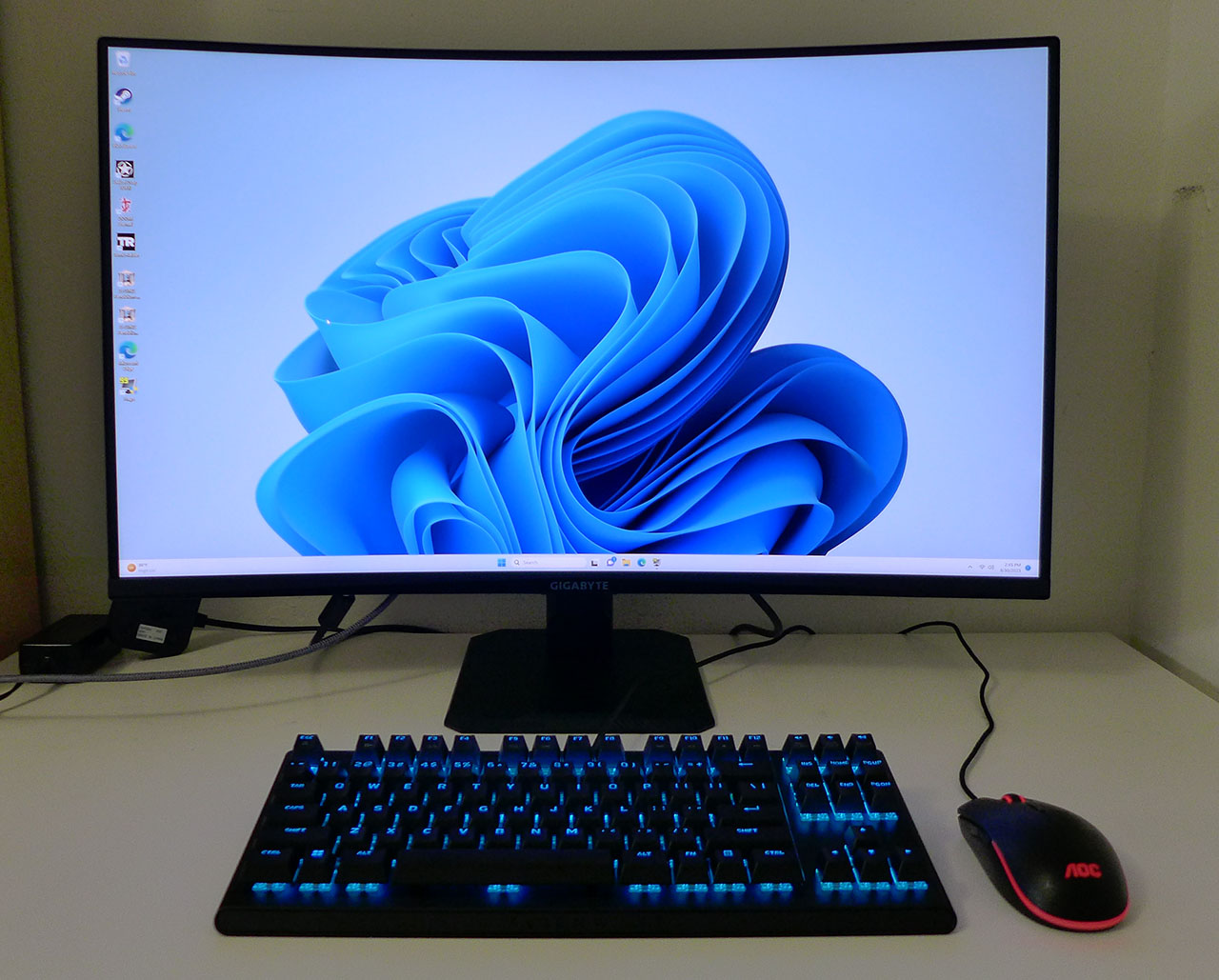Why you can trust Tom's Hardware
No matter what the price of a gaming monitor is, it must have Adaptive-Sync, a fast refresh rate and good video processing to be successful. Image quality is nearly as important, but there is some wiggle room there. In that category, I look for high contrast and accurate gamma. If color is close to spec without calibration, that’s a good thing.

The Gigabyte GS32QC meets those requirements. It leaves out less important things like speakers, USB ports and LED lighting. But it has superb video processing with a top-quality overdrive, low input lag, effective backlight strobe and a smooth responsive feel. Plus, it delivers the same gaming experience as many 240 Hz monitors by matching or even beating their lag scores. You’ll need 360 Hz to see a significant difference in motion resolution.
Image quality is excellent thanks to the high contrast VA panel used here. It offers triple the dynamic range of the best IPS screens. Color is accurate out of the box; calibration is not required. The only thing I noted was a slightly smaller color gamut than other wide gamut monitors I’ve tested. The GS32QC still amply exceeds sRGB, but it doesn’t cover as much of DCI-P3 as others, mainly due to under-saturation of blue and green. But I had such a great time gaming on it that I quickly forgot any deficiencies observed in my benchmark tests.
Bottom line: the Gigabyte GS32QC costs just $250. For a 32-inch curved screen. That has lower input lag than many 240 Hz monitors and a premium overdrive. What more is there to consider? Console and PC gamers on a budget should definitely check it out.
MORE: Best Gaming Monitors
MORE: How We Test PC Monitors
MORE: How to Buy a PC Monitor
Get Tom's Hardware's best news and in-depth reviews, straight to your inbox.
MORE: How to Choose the Best HDR Monitor

Christian Eberle is a Contributing Editor for Tom's Hardware US. He's a veteran reviewer of A/V equipment, specializing in monitors. Christian began his obsession with tech when he built his first PC in 1991, a 286 running DOS 3.0 at a blazing 12MHz. In 2006, he undertook training from the Imaging Science Foundation in video calibration and testing and thus started a passion for precise imaging that persists to this day. He is also a professional musician with a degree from the New England Conservatory as a classical bassoonist which he used to good effect as a performer with the West Point Army Band from 1987 to 2013. He enjoys watching movies and listening to high-end audio in his custom-built home theater and can be seen riding trails near his home on a race-ready ICE VTX recumbent trike. Christian enjoys the endless summer in Florida where he lives with his wife and Chihuahua and plays with orchestras around the state.

